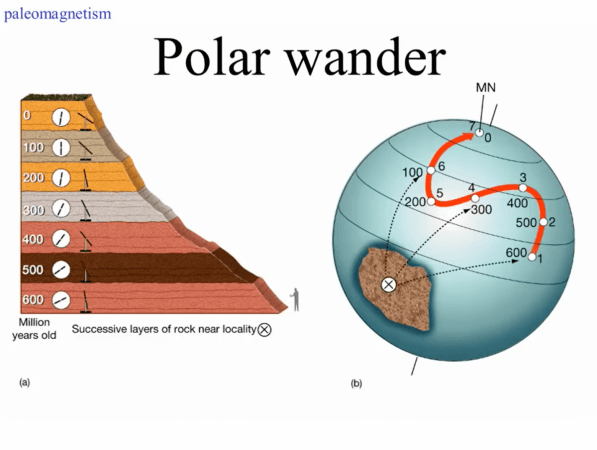A paper published in Nature Communications revealed further evidence that Earth tilts. The outermost, solid shell of the Earth can wobble or perhaps even rollover with respect to the spin axis has been disputed for decades. It's termed "true polar wander."
Joe Kirschvink, Principal Investigator of the Earth-Life Science Institute (ELSI) at Tokyo Institute of Technology, and Prof. Ross Mitchell of the Institute of Geology and Geophysics in Beijing conducted the research. Mitchell knew exactly which rocks to examine because he studied Apennine geology in central Italy as a student.

The Study
For the last three decades, geophysicists have debated whether a big true polar wander event happened in the Cretaceous through public debates in the magazine Science and at several seminars.
The global team of scientists then wagered that paleomagnetic data from Cretaceous limestones from Italy would give a clear test. Studies of the magnetism of newer rocks in the same location uncovered evidence of the dinosaur-killing asteroid hit about 50 years ago.
"These Italian sedimentary rocks turn out to be exceptional and highly dependable," says co-author and geobiologist Sarah Slotznick of Dartmouth College.
Paleomagnetic data with plenty of variabilities are necessary to follow the wander of Earth's spin axis' old position. The Italian findings show a 12-degree tilt of the globe 84 million years ago, as anticipated by the true polar wander concept. The scientists also discovered that even after tilting on its side, Earth reversed direction and rotated again, a total of roughly 25 arcs in around five million years.

Did The True Polar Wander Cause Ice Age?
Based on data from the Pacific Ocean, including the Hawaiian Islands' location, Rice University geophysicists estimated Earth moved relative to its spin axis during the last 12 million years, causing Greenland to drift far enough north to start the ice age 3.2 million years ago.
A 2017 study from Gordon's (the W.M. Keck Professor of Earth, Environmental and Planetary Science) team revealed how to utilise hot spots as a worldwide point of reference for tracking tectonic plate movement, while another from Harvard University connected real polar wander to the start of the ice age.
"We're utilising these hot areas as a reference frame for plumes that originate in the deep mantle," he explained.
Earth, like any rotating object, experiences a centrifugal force, which pulls on its fluid interior. Earth is 26 miles bigger in diameter at the equator than it is at the poles. True polar wander may develop when thick, viscous mantle bumps form away from the equator.
True polar wander, he said, is not simply a shift in the location of the Earth's magnetic poles.
Tectonic plates continually cycle fresh material into and out of the Earth's mantle. Subduction may explain the very fluid mantle abnormalities that produce true polar drift.

















